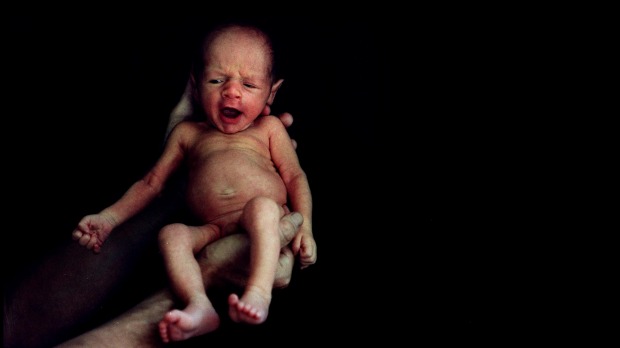
Home births are safer in some cases, British health authorities say. Photo: Louise Kennerley
- More than 60 per cent of Sydney’s maternity hospitals have seen an increase in the number of women who have had medical intervention in childbirth over the past five years, failing to meet ambitious targets to increase intervention-free birth in the state.
And some types of intervention in birth have increased dramatically in that time, with nearly 39 per cent of first-time mums now having their labour induced, a 15 per cent increase on 2009.
But the clinical community is split over whether the failure to meet the targets is leaving women with inadequate care, or if the targets themselves are too ambitious and could have unintended negative consequences.
In Britain, the push to improve vaginal birth rates has been criticised after several high-profile deaths in hospital maternity units which were in part put down to an “over-zealous pursuit of natural childbirth at any cost”, along with a supreme court victory for a women who claimed she was not given enough information about the risks of vaginal birth.
But Australian College of Midwives’ spokeswoman Hannah Dahlen said the British cases were caused by specific failures of care in individual hospitals, and that in NSW, the natural birth targets were achievable and best for mothers and babies.
“The cascade of intervention is having a serious effect on women’s health, and we have known for a long time about the effect on the baby’s health,” she said.
Figures from Health Statistics NSW show there appears to have been an increase in the number of women suffering from major bleeding that requires a blood transfusion after both vaginal and caesarean section, to 1.7 per cent of all births.
She said she was shocked to see the large rise in inductions.
“That is the biggest predictor of having a haemorrhage,” she said.
She said she would like to see the Towards Normal Birth policy (currently undergoing its five year review) continued, with a greater focus on preventing first-time mothers from having caesareans, which then lead to more caesareans in later pregnancies.
The most recent data shows almost all hospitals are struggling to meet the Towards Normal Birth targets, and many are going backwards.
The policy was introduced to give women more control over their births and de-medicalise delivery, and aims to increase access to midwife-led care and alternative pain relief options such as water submersion.
But only 39 per cent of hospitals for which there is a available data increased their rate of vaginal birth between 2009 and 2013, the last year for which information is available.
Private hospitals had even higher rates of intervention than public hospitals, with an average caesarean section rate of 43.5 per cent.
But the head of the Royal Australian and New Zealand College of Obstetricians and Gynaecologists, Michael Permezel, said Australia’s rates of caesarean section were similar to countries overseas, and were appropriate given mothers were getting older, and had more conditions that made vaginal birth more difficult, such as excess weight or diabetes.
“We should be working towards improving our maternal obesity rate and improving control of diabetes in pregnancy,” he said. “But I don’t think the correct manner is having a dictum from above from hospital administrators saying we need to reduce your caesarean rate.”
He said as more research was done on interventions in labour, what was considered the safest or best option would change – and it would also depend on a woman’s individual preferences. He said women who were older, more well-off, and less likely to have several births so wouldn’t be at greater risk from repeat caesareans, were also more likely to have private health care, which might explain the higher caesarean rate in private care.
“Women are becoming more risk-averse. Where they previously would have tolerated risk of a difficult vaginal birth or forceps delivery or even a vaginal birth after caesarean … many women, but not all, choose a caesarean section,” he said.
And while inductions in the past were thought to increase other interventions such as caesarean section, emerging research was showing they may actually have the opposite approach.
“More overweight mothers means higher blood pressure, more diabetes, more women going overdue, and there is also very good research that shows induction of labour is appropriate in those circumstances,” he said.
Joanna Holt, the chief Executive of NSW Kids and Families, said the caesarean section rate as a whole had remained relatively stable in the five years to 2013, and was currently nearly 28 per cent in public hospitals, and the rise in maternal haemorrhages from 1.1 per cent to 1.7 per cent was too small to be considered a trend.
The decision to induce a birth was based on a number of individual factors including weight and fetal growth restriction.
“It is noted that in NSW, the percentage of mothers aged 35 years and over [24.2%] was almost twice that of the national average for 2012 [14%] which may be a contributing factor,” she said.
She said a number of local health districts had adopted policies that would give women more options about their birth, and now 12 or 15 local health districts that provided maternity services had midwife practice teams within them.
